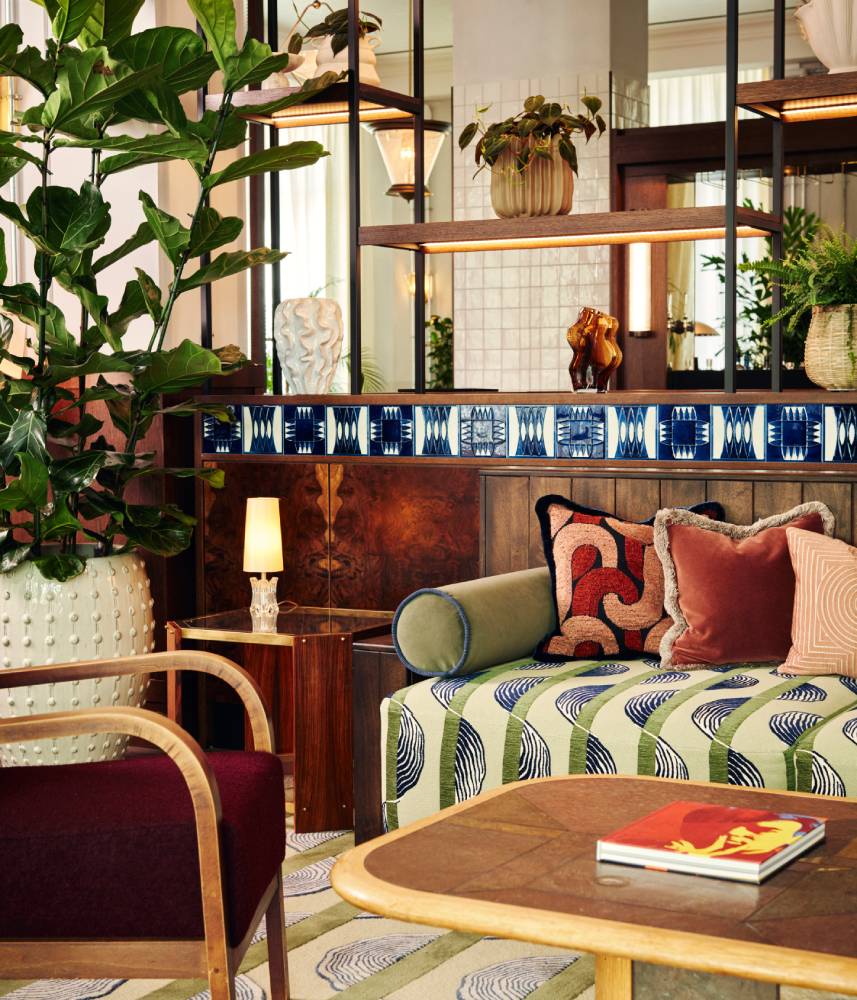Tarkett
United KingdomDesigners, manufacturers and end-users alike are continuing to recognise that the need to transition away from a linear economy and towards a circular one has never been more pressing. Well into its journey towards a circular economy, flooring and wall coverings manufacturer Tarkett demonstrates the continued evolution of its closed-loop production system.
Recognising that circularity isn’t something that can be retrofitted, Tarkett instead adopted a mindset change within its operations that considers circularity from the start – reflecting this in its continuous product innovation and future-forward initiatives that prioritise reduction, reuse and recycling wherever possible.
“As a manufacturer of global scale, we are aware that we have a responsibility to reduce our impact on climate change by supporting the decarbonisation of the built environment – and increasingly, our customers are looking towards circular solutions as trends shift towards a circular economy,” explains Ross Dight, Technical and Sustainability Director at Tarkett. “To support this, we’ve been working to move away from the industry’s ‘take-make-waste’ model towards a closed-loop system, which involved an ambitious strategy with challenging milestones.”
Starting at the end
In order to evolve past these ‘take-make-waste’ models that have dominated the manufacturing industry until recent years, it’s crucial that brands learn to adapt and consider circularity from the very beginning of their design and production process, says Dight. With its cradle-to-cradle principles now well established, Tarkett has demonstrated how real circularity must be incorporated from the outset, emphasising that this commitment can – and should – be present from ‘beginning to end and round again’.

“The first step to adopting a truly circular ethos is to start at the end, which is where our design decisions start,” outlines Dight. “In addition to designing for functionality and aesthetic appeal, we carefully consider the materials we use to create our products according to Cradle-to-Cradle methodology, as well as designing for end-of-life disassembly. In the case of DESSO by Tarkett Carpet Tiles, two main components (yarn and EcoBase backing) can be taken apart in a way which allows us to recycle them into quality raw materials for new carpet tiles, time and time again.”
Closing the loop
Tarkett’s commitment to closing the loop in its production chain drives the brand to do more with less at every stage – this ranges from designing its products to live multiple lives and developing innovative materials that are made to be remade, to building systems that return and recycle end-of-life flooring to complete the circular journey.
This commitment inspired the launch of Tarkett ReStart® in 2010, the brand’s in-house recycling service, which takes everything from linoleum and vinyl to old click and loose-lay vinyl flooring and used carpeting.“Unlocking true circularity rests with being able to take responsibility for your products at the very end of their lives – and Tarkett ReStart does just that,” Dight says. “Every day, we work with our customers to actively divert flooring waste away from common, carbon-intensive disposal methods such as landfill and incineration.”

Beginning by doing more with less, Tarkett strives to design, produce, sell and recycle in a holistic way that generates significantly less carbon and less waste, explains Dight, while also contributing to greater comfort, better health and wellbeing for humans and the environment alike.
“To limit the use of virgin raw materials, we cooperate closely with partner companies across multiple industries, actively recovering valuable materials otherwise destined for waste,” Dight continues. “This allows us to reduce the carbon footprint of our products and keep high-quality, raw materials in the loop.” For example, DESSO by Tarkett already incorporates calcium carbonate from local drinking water industries into its carpet tile production cycle, reducing the demand for petroleum-based and mined resources.
Continuously innovating
Self-proclaimed “restless innovators”, Tarkett carefully tracks and calculates the circular carbon footprint of each of its carpet tile collections to identify new opportunities for improvement. Exploring cross-industry partnerships and cooperating with scientific institutions also helps the brand to stay innovative and identify new solutions to industry challenges.
“We know through experience that circularity is a collective effort, and the partnerships we forge across industries help us to keep more material resources in the loop,” adds Dight. “Our latest affiliation transforms pine rosin, a by-product of the Scandinavian paper industry, into a bio-based ingredient for our EcoBase carpet tile backing, providing our customers with products that embody even less carbon from the start.”

Tarkett’s EcoBase carpet tile backing sees bio-based pine rosin replace a petroleum-based resource. This 5% material adjustment results in an average 20% reduction in each tile’s Circular Carbon Footprint while remaining 100% recyclable and Cradle to Cradle Gold-certified1, thanks to DESSO’s closed loop system. This latest innovation offers specifiers a bio-based backing solution, and as the carpet tiles consist of two main components – yarn and DESSO EcoBase backing – they can be taken apart just as neatly as they came together. This allows the tiles to be recycled into quality raw materials at the end of their life, able to create a new product time and time again.
1 Circular Carbon Footprint: according to the product specific Environmental Product Declarations (EPDs) S-P-13142, S-P-05827, S-P-08559, S-P08561, S-P-09339, S-P-08952. Externally verified by Bureau Veritas, based on the total carbon footprint (Modules A-D) with a closed loop circular recycling scenario. Published March-June 2024.


